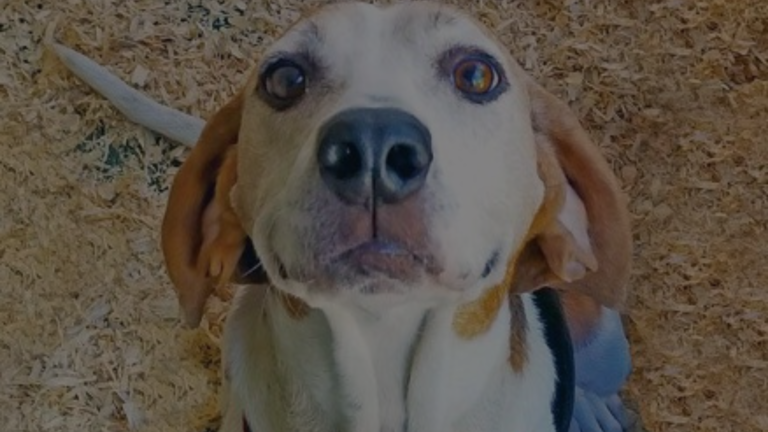Coming home from surgery with a cone (technically called an Elizabethan collar) isn’t exactly a dog’s dream vacation. However, adding the confinement of a crate to the mix can raise concerns for pet owners. Can a dog sleep in a crate with a cone? The answer, thankfully, is yes, but with a few crucial considerations.
This guide dives deep into the world of dogs, cones, and crates, providing you with the information and tips needed to ensure your pup’s recovery is as comfortable and stress-free as possible.
Why Crates and Cones Can Be a Tricky Combo?
Let’s face it, cones are bulky and awkward. They can make simple tasks like eating, drinking, and navigating doorways difficult. Throw in the limited space of a crate, and you have a recipe for potential frustration for both you and your dog.
Here are some key challenges your dog might face when sleeping in a crate with a cone:
- Bumping and banging: The cone can easily bump against the crate bars, causing noise and discomfort, especially when your dog tries to turn or adjust their position.
- Limited mobility: The cone can restrict your dog’s movement, making it harder for them to get comfortable and find their favorite sleeping position.
- Anxiety and stress: The unfamiliar sensation of the cone and the confinement of the crate can be stressful for some dogs, leading to restlessness and disrupted sleep.

Essential Tips and Tricks
Despite the challenges, with some adjustments and TLC, your dog can still enjoy restful sleep in their crate while wearing a cone. Here’s how:
Choose the Right Crate Size:
- Measure your dog carefully to ensure they have enough space to move around comfortably even with the cone.
- Consider upsizing the crate if your dog is typically right at the edge of their current size. This extra space will give them more room to maneuver without bumping the cone.
Make the Crate Cozy and Comfortable:
- Line the crate with soft bedding like blankets or a cushioned crate pad.
- Place their favorite toys and treats inside to provide comfort and distraction.
- Cover the crate partially with a breathable cloth to create a den-like atmosphere and reduce anxiety.
Adjust the Cone for Comfort:
- Look for inflatable or soft-sided cones that offer more flexibility and comfort compared to rigid plastic ones.
- Consult your vet about trimming the cone slightly if it’s significantly obstructing your dog’s movement, but never remove it without their approval.
Create a Positive Association:
- Feed your dog meals and treats inside the crate while they wear the cone to create a positive association with the space.
- Offer praise and gentle petting when they enter the crate calmly.
Supervise and Monitor:
- Initially, stay close to the crate when your dog sleeps to ensure they’re comfortable and not getting caught on anything.
- Check on them regularly throughout the night to address any concerns.
Be Patient and Understanding:
- Recovery takes time and adjusting to the cone can be frustrating for your dog. Be patient and offer plenty of love and support.
- Consult your vet if your dog experiences excessive stress, anxiety, or difficulty sleeping despite your efforts.

Additional Considerations for Specific Situations
Puppies in Crates with Cones:
- Puppies are generally more adaptable, but be extra mindful of their comfort and needs.
- Use a soft, inflatable cone and provide plenty of chew toys to prevent boredom.
Senior Dogs in Crates with Cones:
- Older dogs may have mobility issues that could be exacerbated by the cone.
- Choose a very soft cone and ensure the crate is easily accessible.
- Consult your vet for specific guidance on managing senior dogs with cones and crates.
Large Dogs in Crates with Cones:
- Large dogs may require a significantly larger crate to accommodate the cone.
- Use a sturdy crate with soft bedding to prevent injuries from bumping.
- Pay close attention to their comfort and adjust the cone or crate size as needed.

Remember: Every dog is an individual, and their needs and preferences will vary. Observe your dog’s behavior and adjust your approach accordingly to ensure their comfort and well-being during recovery.
Can a Dog Sleep in a Crate With a Cone?
Yes, a dog can sleep with a cone on. Although it may be uncomfortable for the dog, it will not hurt them. The cone serves to protect the dog’s wound and prevents them from licking or biting at it, so it should be kept on. Initially, your dog might struggle to get restful sleep, and they may need assistance to get comfortable. Ensure that the cone fits properly to avoid causing discomfort when they lie down. If you’re concerned about your dog’s comfort, consider using an alternative dog cone, such as the BABYYLTRL Dog Cone Collar, which acts as a cushion to help them sleep.
Resources & References
FAQs About Dogs Sleeping in Crates with Cones
Is it okay to leave my dog in a crate all night while wearing a cone?
Ideally, your dog shouldn’t be crated for extended periods while wearing a cone. Aim for shorter intervals, especially initially, and gradually increase crate time as they adjust. Remember, they still need bathroom breaks and opportunities to stretch and move around.
What if my dog refuses to sleep in their crate with the cone on?
Don’t force it! Start with short, positive crate sessions while they’re awake and gradually introduce longer periods at night. Offer treats and praise to create a positive association. If they still struggle, consult your vet for alternative recovery methods.
Can I use a different type of cone instead of the plastic one?
Yes! Inflatable or soft-sided cones offer more flexibility and comfort, especially for larger dogs or active pups. Always discuss any alternatives with your vet before using them.
Should I remove the cone at night for better sleep?
Never remove the cone without your vet’s explicit permission. Licking the incision site can hinder healing and lead to complications. Focus on making the crate as comfortable as possible with the cone on.
My dog seems stressed and anxious with the cone and crate combination. What can I do?
Provide calming aids like calming chews, pheromone diffusers, or gentle music. Short exercise sessions outside the crate can also help relieve stress. If anxiety persists, consult your vet for medication or behavior modification advice.
Are there any alternatives to using a crate during recovery with a cone?
In some cases, yes. Gated areas, playpens, or dog-proofed rooms can provide confinement while allowing more space and movement. However, this option isn’t suitable for all dogs, and your vet’s approval is crucial.







